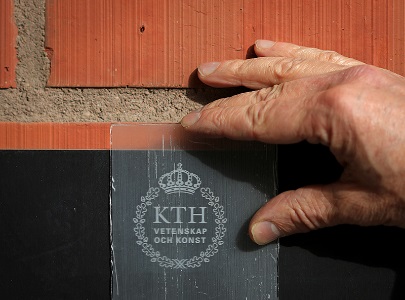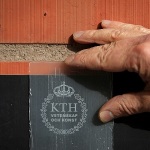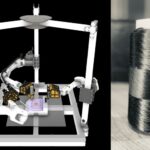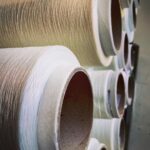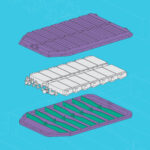Lars Berglund is a Researcher and Professor at Wallenberg Wood Science Center Sweden’s at KTH Royal Institute of Technology. With a background in creating strong, light-weight carbon fiber composites for the aerospace industry, Berglund has a history of tweaking materials to exhibit new properties. A few years ago, though, he set his mind to the task of trying to do the same thing for Swedish lumber as he had for the aerospace industry, by figuring out how to give wood totally new properties. Ultimately, he created what he calls a transparent wood composite.
Lars Berglund says that while optically transparent wood has been developed for microscopic samples in the study of wood anatomy, the KTH project introduces a way to use the material on a large scale.
‘Transparent wood is a good material for solar cells, since it’s a low-cost, readily available and renewable resource,’ Berglund says. ‘This becomes particularly important in covering large surfaces with solar cells.’
Berglund says transparent wood panels can also be used for windows, and semitransparent facades, when the idea is to let light in but maintain privacy.
The optically transparent wood is a type of wood veneer in which the lignin, a component of the cell walls, is removed chemically.
‘When the lignin is removed, the wood becomes beautifully white. But because wood isn’t not naturally transparent, we achieve that effect with some nanoscale tailoring. The white porous veneer substrate is impregnated with a transparent polymer and the optical properties of the two are then matched. No one has previously considered the possibility of creating larger transparent structures for use as solar cells and in buildings. Among the work to be done next is enhancing the transparency of the material and scaling up the manufacturing process’, Berglund says and adds ‘We also intend to work further with different types of wood. Wood is by far the most used bio-based material in buildings. It’s attractive that the material comes from renewable sources. It also offers excellent mechanical properties, including strength, toughness, low density and low thermal conductivity.’
The project is financed by the Knut and Alice Wallenberg Foundation.
Caption picture n.1: The transparent wood. Photo Peter Larsson
Caption picture n.2: Lars Berglund


